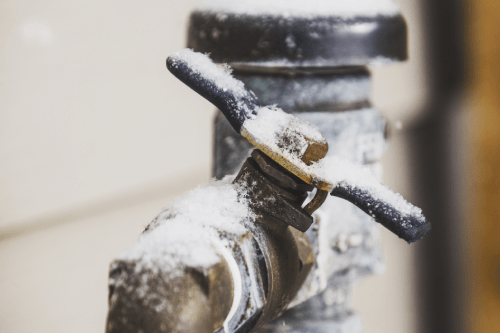Ways to Defend Your Pipes from Cold Weather: Professional Tips
Ways to Defend Your Pipes from Cold Weather: Professional Tips
Blog Article
Do you find yourself hunting for answers on Helpful Tips to Prevent Frozen Pipes this Winter?

Cold weather can wreak havoc on your pipes, particularly by freezing pipes. Below's exactly how to stop it from occurring and what to do if it does.
Intro
As temperature levels decrease, the threat of icy pipelines rises, possibly causing expensive repairs and water damages. Comprehending exactly how to prevent icy pipes is crucial for home owners in chilly climates.
Recognizing Frozen Pipelines
What causes pipelines to freeze?
Pipelines ice up when subjected to temperature levels below 32 ° F (0 ° C) for expanded periods. As water inside the pipes ices up, it expands, putting pressure on the pipeline walls and potentially triggering them to break.
Risks and damages
Icy pipelines can lead to water system disturbances, residential property damages, and expensive fixings. Burst pipes can flood homes and trigger substantial structural damage.
Indicators of Frozen Pipes
Determining frozen pipelines early can stop them from rupturing.
Exactly how to recognize frozen pipes
Look for decreased water flow from taps, unusual smells or sounds from pipelines, and noticeable frost on exposed pipes.
Prevention Tips
Insulating vulnerable pipelines
Wrap pipelines in insulation sleeves or utilize warmth tape to shield them from freezing temperature levels. Focus on pipelines in unheated or outside locations of the home.
Heating strategies
Keep indoor areas sufficiently heated, particularly locations with plumbing. Open up cabinet doors to enable cozy air to circulate around pipes under sinks.
Shielding Outdoor Pipes
Yard hoses and outside taps
Detach and drain pipes garden tubes before winter months. Set up frost-proof spigots or cover outdoor taps with shielded caps.
What to Do If Your Pipelines Freeze
Immediate actions to take
If you think frozen pipes, maintain taps available to soothe pressure as the ice thaws. Make use of a hairdryer or towels soaked in hot water to thaw pipelines gradually.
Long-Term Solutions
Structural changes
Consider rerouting pipes away from outside wall surfaces or unheated locations. Include added insulation to attic rooms, cellars, and crawl spaces.
Upgrading insulation
Buy top notch insulation for pipes, attics, and walls. Appropriate insulation assists maintain regular temperatures and lowers the danger of icy pipes.
Final thought
Stopping frozen pipelines requires positive measures and quick reactions. By recognizing the reasons, indicators, and safety nets, house owners can safeguard their pipes during winter.
5 Ways to Prevent Frozen Pipes
Drain Outdoor Faucets and Disconnect Hoses
First, close the shut-off valve that controls the flow of water in the pipe to your outdoor faucet. Then, head outside to disconnect and drain your hose and open the outdoor faucet to allow the water to completely drain out of the line. Turn off the faucet when done. Finally, head back to the shut-off valve and drain the remaining water inside the pipe into a bucket or container. Additionally, if you have a home irrigation system, you should consider hiring an expert to clear the system of water each year.
Insulate Pipes
One of the best and most cost-effective methods for preventing frozen water pipes is to wrap your pipes with insulation. This is especially important for areas in your home that aren’t exposed to heat, such as an attic. We suggest using foam sleeves, which can typically be found at your local hardware store.
Keep Heat Running at 65
Your pipes are located inside your walls, and the temperature there is much colder than the rest of the house. To prevent your pipes from freezing, The Insurance Information Institute suggests that you keep your home heated to at least 65 degrees, even when traveling. You may want to invest in smart devices that can keep an eye on the temperature in your home while you’re away.
Leave Water Dripping
Moving water — even a small trickle — can prevent ice from forming inside your pipes. When freezing temps are imminent, start a drip of water from all faucets that serve exposed pipes. Leaving a few faucets running will also help relieve pressure inside the pipes and help prevent a rupture if the water inside freezes.
Open Cupboard Doors
Warm your kitchen and bathroom pipes by opening cupboards and vanities. You should also leave your interior doors ajar to help warm air circulate evenly throughout your home.

I discovered that article about Winter Plumbing Precautions: Preventing Frozen Pipes while surfing the web. So long as you enjoyed our post if you please make sure you remember to share it. I truly appreciate reading our article about Prevent Frozen Pipes .
Call Today Report this page